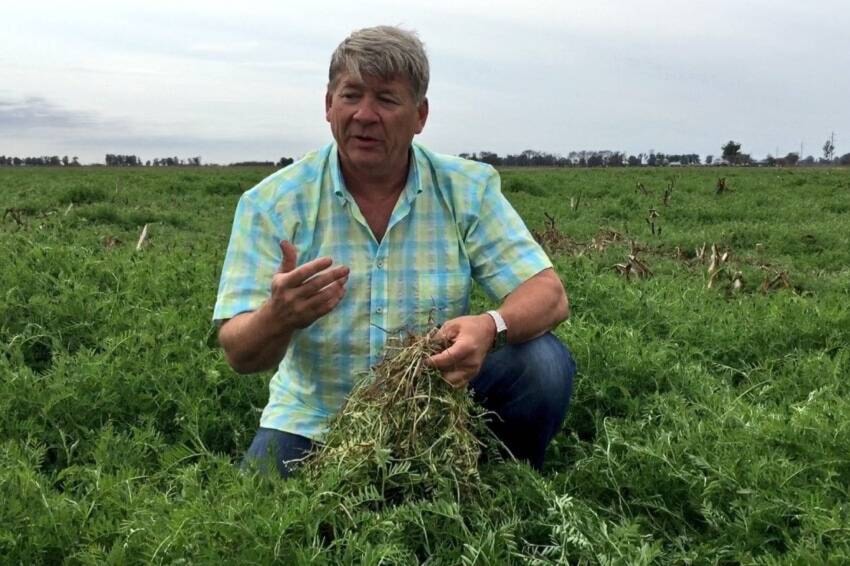“Every breath you take…every move you make.”
Sounds like the lyrics of a song but instead, I’m referring to the importance of nitrogen because, like the lyrics of the Police song, “every breath you take” is 78 per cent nitrogen and it is nitrogen that is responsible for “every move you make”.
Your body is 3 per cent nitrogen by mass and it plays a key role in the formation of essential amino acids as well as DNA, RNA, ATP (nucleic acids). However, the 78 per cent nitrogen* that “with every breath you take” exists in the air as the N2 state which is inert or unreactive. It is only when nitrogen becomes fixed does it have the power to sustain life.
It is Haber-Bosch that turns inert N2 into fixed usable nitrogen enabling “every move you make”. So now you ask – “What the heck is Haber-Bosch?”
I would argue that the Haber-Bosch process is one of the most important inventions in human history.
In his book “The Alchemy of Air” Thomas Hager explains that roughly one half of the protein in every man, woman and child on planet comes from nitrogen fertilizer.
It is Haber-Bosch that enabled the increase of our population from 1.6B in 1900 to over 8B today. No Haber Bosch…say goodbye to 4 billion people!
So, what is this “Haber-Bosch” that is so important, but most people have no clue about?
Well before Haber-Bosch the world was so desperately short of nitrogen that people killed each other over bird poop. You remember the guano wars? Probably not, but around 1864 Spanish troops invaded the bird-poop-rich islands off the coast of Peru causing Peru, Chile, Bolivia and Ecuador to fight and push back the Spaniards. Then in 1879 Peru, Bolivia and Chile went at it again … all fighting over bird poop.
Why?
Because by the end of the 1800s the world was running out of nitrogen. It became clear that without a whole lot more bird poop there was simply no on-going supply of N that could sustain the planet. It became such a serious issue that a call went out from world scientists for a solution to the N problem.
In the first decade of the 20th century Fritz Haber and Carl Bosch developed a process using pressure, temperature, natural gas and metal catalysts that turns inert N2 into anhydrous ammonia (NH3) which is a precursor to many types of nitrogen fertilizers such as granular urea, liquid urea ammonium nitrate, ammonium sulphate and ammonium nitrate. These are fertilizers used by farmers today to attain the yields need to sustain our population.
Now for some “cowboy math” … one bushel of canola needs about 3 lbs of nitrogen; so, want to grow 50 bushels of canola? You will need to provide about 150 lbs of fixed N per acre. Wheat: about 2 lbs per bushel so 100 bushels equals 200 lbs of N per acre (this is because wheat is high in protein and requires more N), want to grow 150 bushels of oats per acre – you will need about 150 lbs of N, 200 bushels of corn will need about 300 lbs of N per acre…you get the idea. This is not alchemy, it’s basic biology.
Nitrogen to sustain crop growth can only come from a few sources; fertilizer, lightning will strike fixed N into the ground, legume crops (think peas, lentils, vetch, clover, alfalfa. etc) are capable of biological nitrogen fixation, a promising but yet not well understood area called microbial fixation OR you can mine your “bank account” which is your soil organic matter by pulling nitrogen out of your long-term soil health deposit.
For every 1% of organic matter (OM) in the soil there will be about 1,000 lbs of nitrogen per acre in this soil “bank account”. But here’s the catch; releasing that nitrogen involves tillage. Tillage will liberate the nitrogen through a process called mineralization…but…and this is a big BUT, tillage also destroys soil structure, blasts off greenhouse gases, reduces water holding capacity and depletes the bank account.
When you look at the big picture and do some cowboy math you can see farmers don’t have that many choices to meet crop yield targets. They can include some legumes in their rotation (but that is only a partial solution). Lightning? – not that dependable and the application method can be dangerous. Tillage? (which is heavily employed in organic farming) - yep, but eventually you destroy soil structure while depleting your organic matter, blasting off green house gases and leaving your bank account broke. So…this leaves…nitrogen fertilizer…which is why farmers do what they do.
And if you are a farmer and know that nitrogen is going to cost your about $1 per pound, why would you waste it?
This my, friends sets up the next column where we will look at the controversy surrounding the Canadian Federal Government target of a 30% reduction in nitrous oxide emissions from fertilizer and why many of us in agriculture are so concerned that this policy could significantly hamstring farmers ability to produce food … just when the world needs more not less Canada.
(* Interesting factoid, the nitrogen (N2) in the atmosphere of Mars is only 2.6% which leads me to ask where is the N going to come from to fertilize the crops on Mars to feed the colonists. It’s not rocket science, it might be harder!)
Robert Saik is a professional agrologist and certified agriculture consultant. He is an author of FOOD 5.0 and The Agriculture Manifesto and CEO, of AGvisorPRO an app that connects those seeking agriculture advice with experts who provide answers. You can reach Rob by downloading and connecting to him on AGvisorPRO.
